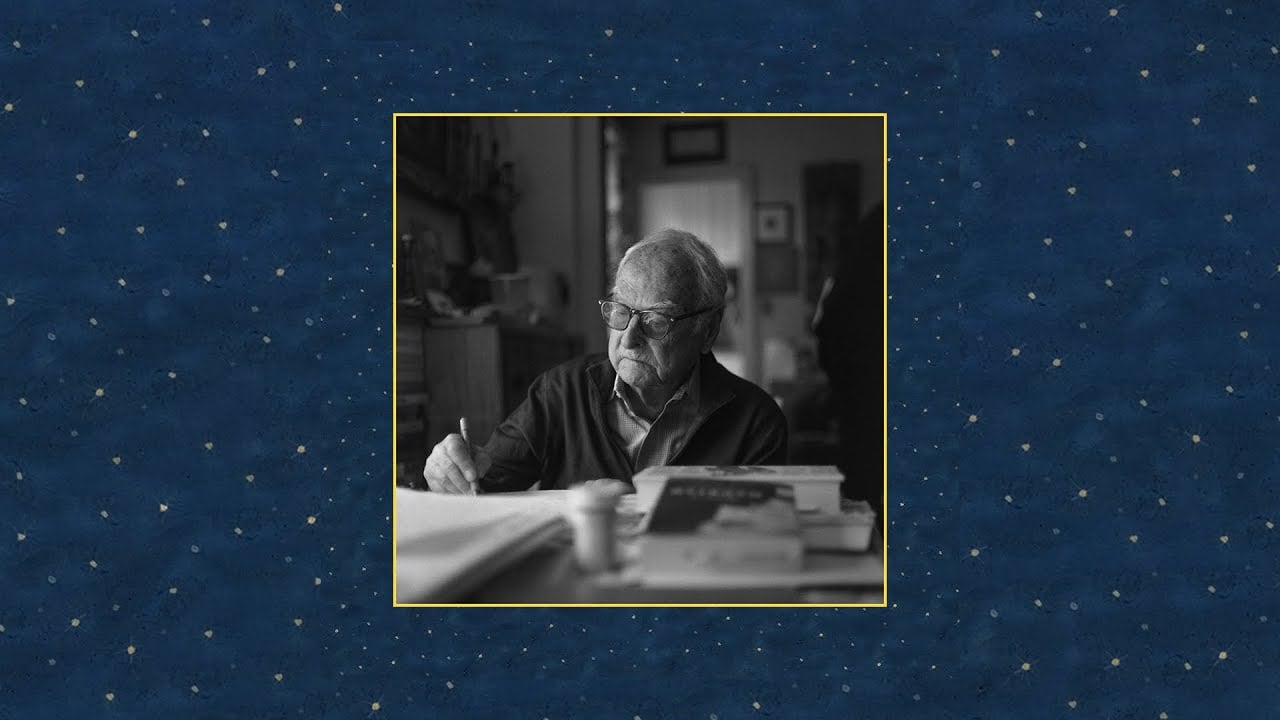#
An Arrested Moment
Written by Dev Benegal
When The Metropolitan Museum, New York began discussing the idea of making a film on the American director James Ivory for their show Ink & Ivory, I was hesitant. Here was a 93 year legend who had won an Academy Award for his screenplay of 'Call Me By Your Name', one who has introduced the world to some of the greatest actors of our times — Helena Bonham Carter, Hugh Grant, worked with legends Paul Newman and Joanne Woodward, Emma Thompson, Anthony Hopkins, Vanessa Redgrave, Ralph Fiennes, Natasha Richardson. And then there are the adaptations of E.M. Forster, Henry James, Kazuo Ishiguro and Ruth Prawer Jhabvala.
Intimidating to say the least.
This could not be a biopic. It had to be an exploration of his way of seeing, Ivory as a collector, and most of all his love and passion for art, his compassion for people and his embrace of diversity.
And 15-20 minutes is what I was given. I managed to negotiate 29 minutes!
In an early conversation with editor Mona Gesbel (they/them), we decided we needed to work in an environment which was fluid, nimble, and most of all stable.
My earlier feature films have been edited on the Avid Film Composer. Yaniv Dabach the editor on my feature 'Road, Movie' wanted to edit on Final Cut 7 (he has now switched back to Avid), while my other editor Antara Lahiri works mostly on Adobe Premiere for Netflix and Amazon Prime with her feature projects edited on Avid.
I had been curious about the development of the new Final Cut Pro. I had tried it a few times but something didn’t quite stick. And Walter (Murch) had also moved away from it. I kept an older Mac Pro (2008-2010) which still runs Final Cut Studio.
It was after making a smaller film for the Met during the pandemic which was edited on DaVinci Resolve - and not a great experience - that I thought I should revisit Final Cut Pro.
Why did FCP not stick? Why was I resisting? Why did I dislike it? Gesbel and I decided to approach this with an open mind. The pandemic also gave us a quiet time to review our reservations.
This time around things were different. Once we accepted the new nomenclature; Library, Event, Project, we got into keywords and favoriting. That was a game changer. The world of sub-clips, and bins opened up in an almost transformative way. Keywords reminded me of Aperture my favorite photo processing app by far.
We saw the short videos by Thomas Grove Carter which were incredibly helpful and on his recommendation bought the Ripple Training course so we could dive deeper.
We decided this film would be cut on Final Cut Pro. Jim (Ivory) too was an early adopter of new technologies when he made his films. It was time for us to take the plunge.
#
The Edit
We had material coming in different frame rates; 24/25/29.97, different formats; Super 8mm, 16mm, 35mm, iPhone ProRes 444, 4K UHD and 4K DCI Sony log, scans of paintings and miniatures from the museum in TIFF, JPG, PNG — it was messy to say the least.
We threw all this into a timeline, hit the spacebar and held our breath. The timeline played. Not once did we get an error message of dropped frames, nor did the application stop playing.
It was a short timeline - about 30min - so that may have helped. Working over the weeks as the editing schedule expanded the one thing that did strike us was - never once did the application crash.
That alone is remarkable.
Here are some screen-grabs:
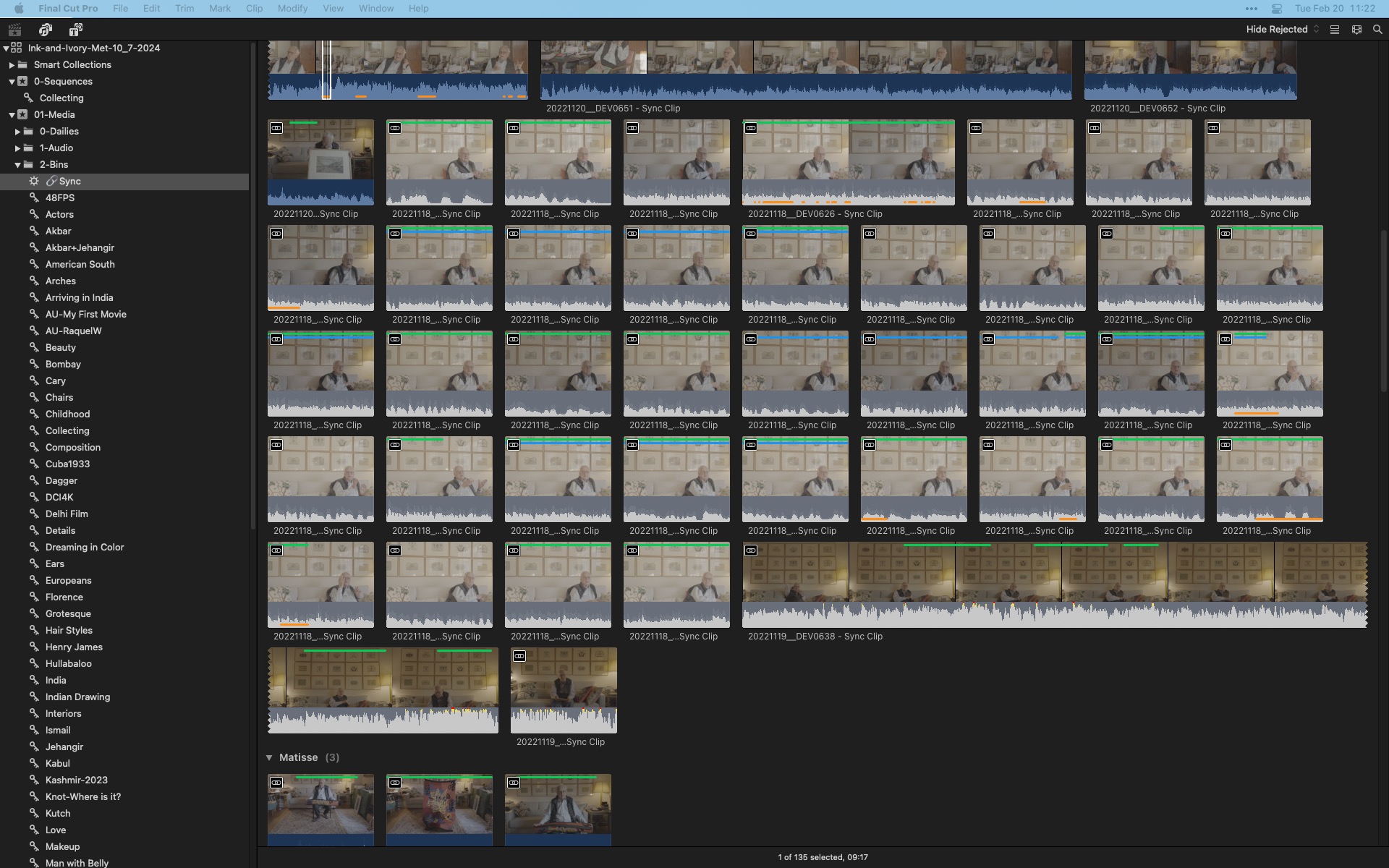
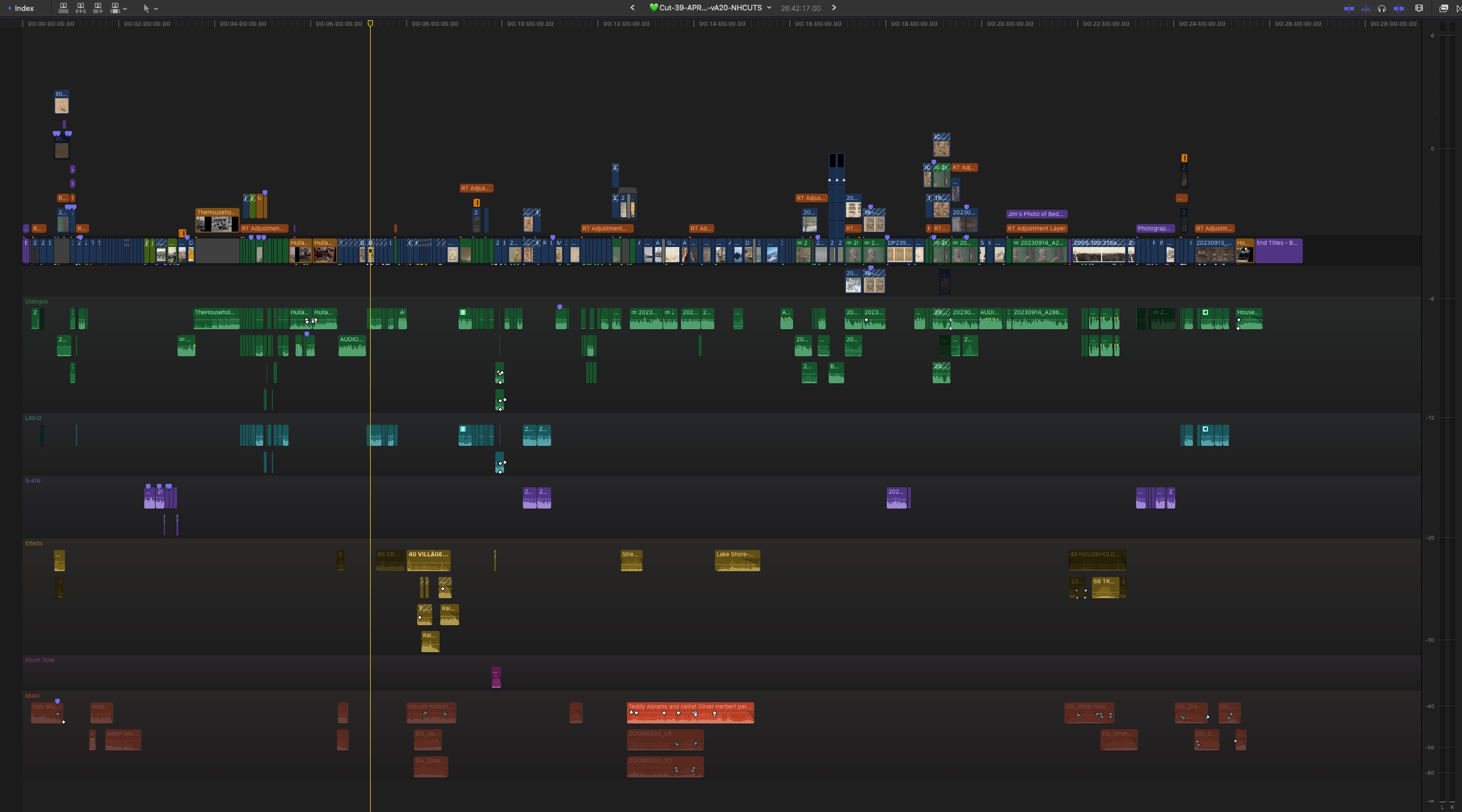
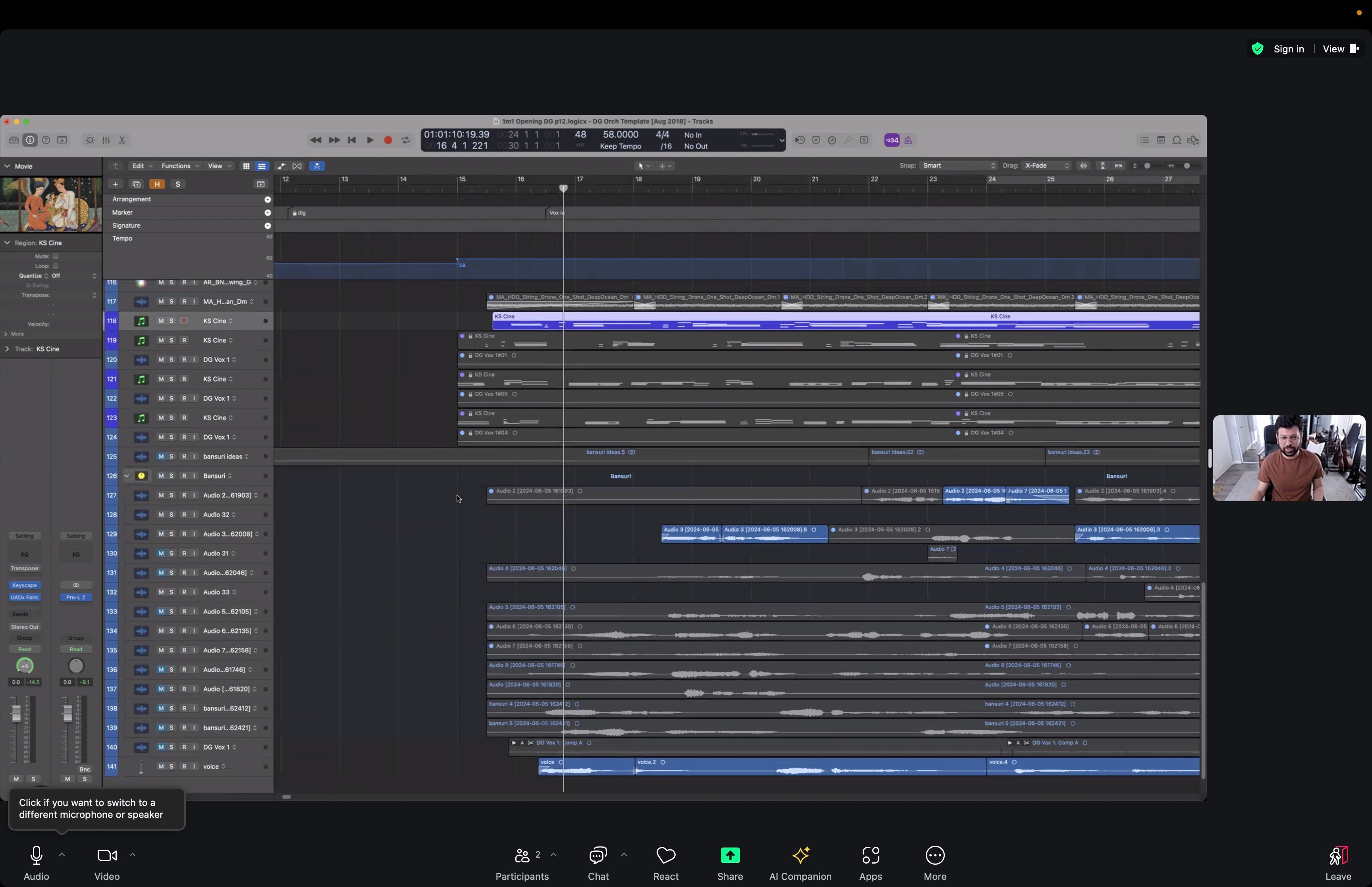
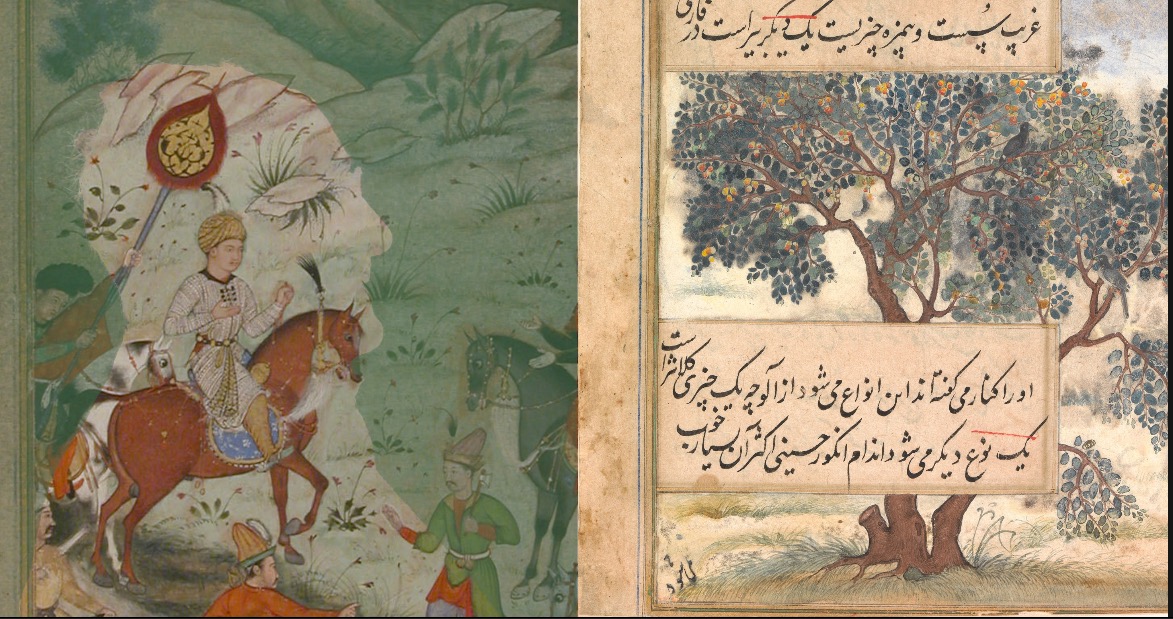
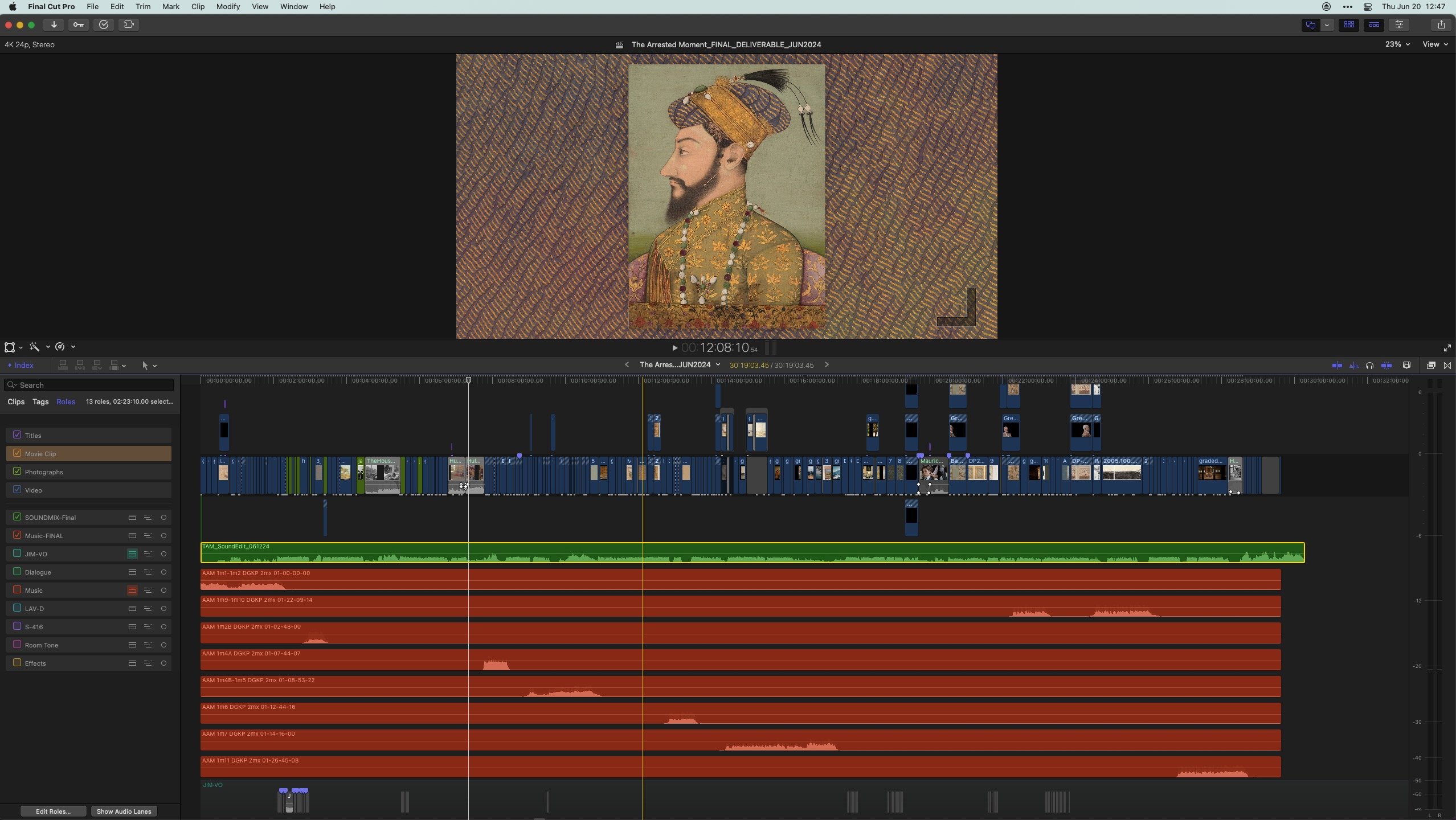
#
Adept at Change
The goal posts for the film kept changing on an almost unimaginable basis. Images, film, and sound were added, removed, added back and went through a process which lasted close to 52 weeks and about 45-48 edits. Once again here's where Final Cut Pro really shone through. We would duplicate timelines. An Event would store all the older timelines, in the event (!) we had to go back to an older edit.
#
Some Struggle
Sometimes we faced issues with connected clips. We would forget about changing clip connections when we wanted to move a clip, leave the connections behind and not want everything to close the gap. We figured that out. Sometimes we resorted to a cringe inducing solution of adding a long gap clip, moving the edit to the right and refining a section of the cut. A bit like adding a long spacer when editing on film. (shrug)
We made many events. And kept refining the process and workflow as we moved along in the edit. As the weeks grew we learnt a lot.
File names with a period or dot did not make the xml transition to Resolve (for color grading) easy. Edit Ready and re-wrapping the pesky Sony FX files may have made it easier.
#
Conclusion
In sum what drew us to Final Cut Pro is, it has the soul of cutting on a Steenbeck and flat bed editing systems. Favoriting and sub-clips are a chef’s kiss. Keywords especially for unscripted or long form projects is so simple, elegant, and effective. Connected clips, the ease to move shots and have everything in sync made the actual process of editing stress free.
Audio was a real revelation. Once you being to work with roles and lanes, it is really hard to go back to a track based system. In particular the way one can focus on roles. Finally exporting to AAF for the sound designer and mixing engineer just worked. And they loved the way they got all the tracks.
We did not get into Compound clips or Multicam clips, because we have still not figured that out. That’s the next stage.
Would I work again on FCP?
Gesbel and I are editing a long form essay film (84min) on the artist Judith Blum, titled 'Everything is Not Okay'. Filmed over four years it has about 55 hours of material. The ease and speed with which we can edit on FCP cannot at the moment be replaced by anything.
The answer is a resounding yes!
#
Applications Used
The team used these apps for the film:
- Final Cut Pro for edit
- Compressor for final deliverables
- Frame io to share and review the edits
- Logic (The Music Composer created music here)
- Pro Tools for sound edit, design, and mix.
- X2Pro5 for AAF Exports
- MacWhisper for transcribing conversations with James Ivory
- Google Docs (for editing conversations and then creating Favourites (subclips))
- Nitro Photo for image processing.
- Photoshop for some background extensions
- Retrobatch Pro to convert and batch export images.
- Production Sound: Sound Devices Mixer
- Sennheiser 416 microphones
- MacStudio M2 Max for editing
- SSD Thunderbolt 4 drives for media
- Backup to Synology NAS (and occasionally to iCloud Drive)
- Da Vinci Resolve for final grade
#
Resources
There’s such a wonderful resourceful community that exists. I’d like to thank all of them. And a special thanks to a few below who I had reached out to for help.
- FCP Cafe (I go there everyday!)
- Thomas Grove Carter (love those shorts)
- Ripple Training (I bought their course)
- Marques Broadcast (Terrific support)
#
Watch Film
You can watch on YouTube here:
You can watch the Directors Cut on Vimeo (password: 8tJW9YX6)
#
Film Festivals
- Film Columbia, Chatham New York October 2024 Official Selection
- New York Indian Film Festival, New York May 2025 In Competition
2024 Singapore Literature Festival in NYC (Oct 19-20, 2024)
At the panel on Editing as Writing, where I spoke about three short stories in my life and why I believe a movie is written in the editing room.

